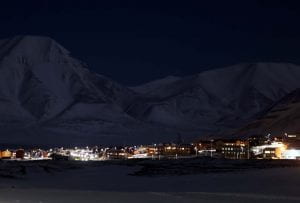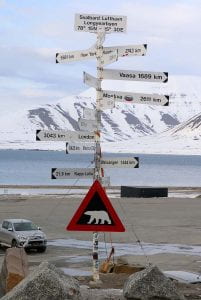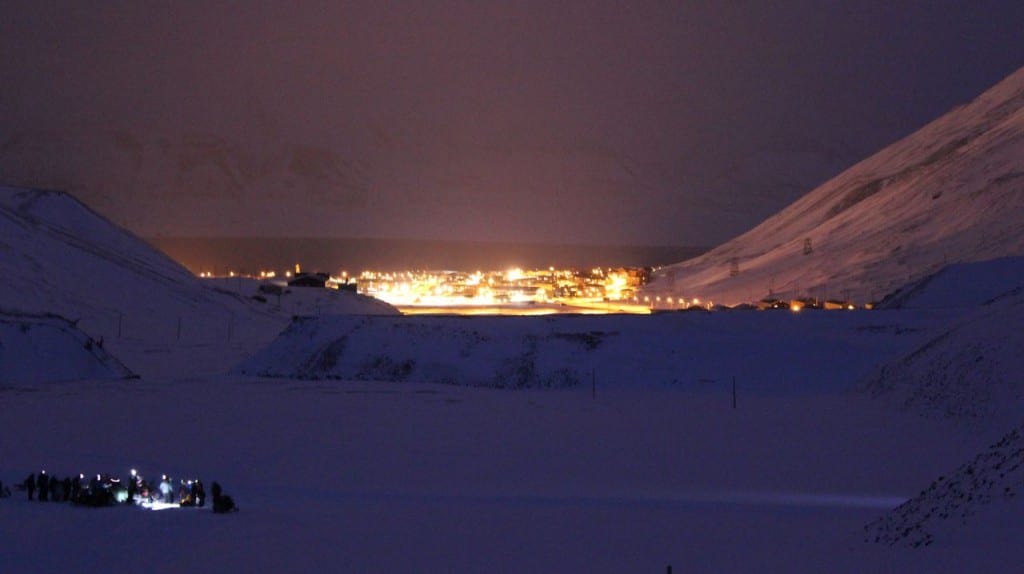Coronavirus and the Arctic: Svalbard, Norway
By Saqar ' M Al Zaabi, on 22 April 2020
Written by Patrizia Isabelle Duda and Ilan Kelman
Svalbard is a Norwegian archipelago about half-way between mainland Norway or the port of Murmansk and the North Pole. It is governed by the Svalbard Treaty from 1920 which gives living and resource extraction rights to the citizens of signatory countries. The territory’s population of 2500-3000 is located primarily on the island of Spitzbergen across several settlements, with the Norwegian settlement of Longyearbyen being the largest with over 80% of the population, followed by the Russian-populated Barentsburg.
The only states to have maintained continuous, historic presence on Svalbard are Norway and Russia. Svalbard has become a fascinating case study for disaster-related influences on Norway-Russia relations, such as through a project funded by the Research Council of Norway on Arctic disaster diplomacy. Svalbard’s developed areas are effectively in coastal lowlands and are susceptible to risks ranging from polar bear attacks to snowmobile and aircraft crashes to avalanches and floods. Disease is also a major risk.
Epidemics have been considered for Svalbard long before the 2020 COVID-19 outbreak. They include zoological and human epidemics due to rabies, tapeworms and the re-emergence of a (potentially mutated) H1N1 virus that previously killed miners on Svalbard during the 1918 Spanish flu pandemic and remained in the tissues of their bodies which failed to decompose in Svalbard’s permafrost. The successful international fictional TV-series “Fortitude” from 2015-2018 dealing with a mysterious virus outbreak on Svalbard is testament to these concerns over the archipelago’s public health.
Healthcare services on Svalbard are limited and are provided mainly by Longyearbyen’s small hospital and to a lesser extent, simple facilities in Barentsburg. Given their limited capacity to deal with either a large influx of sick people and/or complicated health cases, Svalbard’s healthcare services are not built to handle many infected or isolated people, such as has been necessary for the 2020 coronavirus pandemic.
Disaster discussions on Svalbard frequently raise the spectre of a cruise ship outbreak, with norovirus being prominent, where such a ship can easily have more people than Svalbard. Often docking in numerous locations before an outbreak is even detected, cruise ships can have potentially catastrophic consequences on the health and healthcare systems of the communities they visit, a risk highlighted during the Covid-19 pandemic, due to cruise ships with coronavirus, such as the “Diamond Princess” in Japan.
Thus, Svalbard has enacted precautions, especially in the form of communication protocols and pre-established logistical pathways between Svalbard and Tromsø (on Norway’s mainland) to re-locate patients, typically through air evacuation. In the current situation, Svalbard’s Governor quickly announced measures such as banning tourism and visitors from non-Nordic countries arriving in Svalbard; quarantining tourists already on Svalbard and sending them to Oslo; and enacting a quarantine of seven days for anyone arriving in Svalbard’s other communities.
Nonetheless, even with travel restrictions, the possibility of an outbreak on Svalbard remains, as the virus can survive on inanimate objects such as packaging and boxes, although its resistance to cold is not yet known. In any case, beyond Covid-19, Svalbard must consider other possibilities for epidemics and pandemics. IRDR is contributing to this work by analysing how this remote Arctic location could better deal with disease among other risks.
 Close
Close












